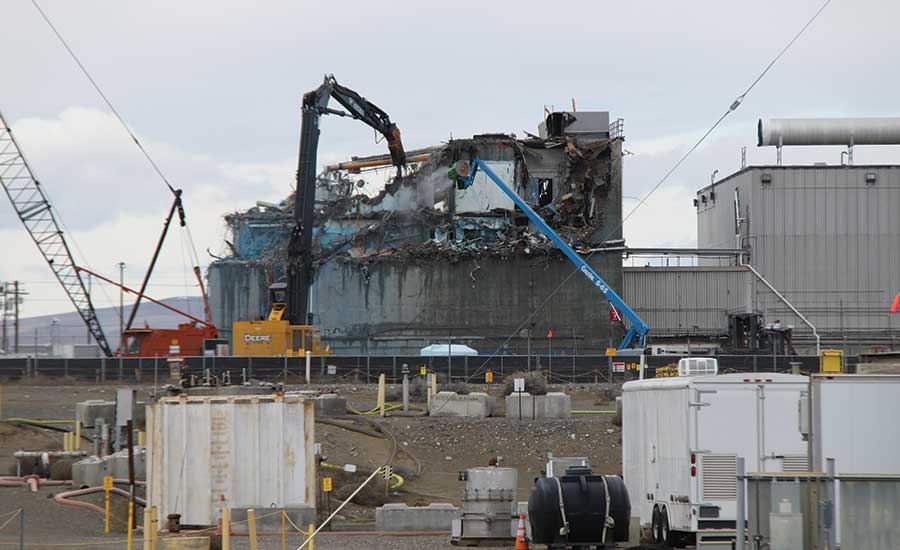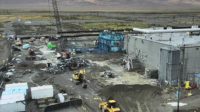As crews from CH2M Hill Plateau Remediation Co. tear down the four main buildings that make up the Plutonium Finishing Plant (PFP) at the Dept. of Energy’s Hanford Nuclear Waste Site in southeastern Washington state, removal of contaminated buildings at one of the nation’s most radioactive sites nears key milestones en route to a full demolition later this year.
Home to the Americium Recovery Facility—also known as the “McCluskey Room,” for worker Harold McCluskey—two of the complex’s four main buildings are close to final removal as work continues on the other two buildings.
“Demolition is progressing safely, deliberately and well,” says Tom Teynor, project director for the DOE’s PFP.
The entire site, which started operation in 1949, once included more than 90 buildings and ceased full operations in 1989. About half those buildings have been removed. The plant was used to process plutonium nitrate solutions, created from dissolved fuel rods and made into solid, hockey-puck-sized plutonium “buttons” and plutonium oxide powder, then shipped to the country’s weapon production facilities. The work contaminated much of the facility, now a $43-million demolition project that includes radiological, asbestos and chemical hazards.
Early demolition preparation has been ongoing for roughly a decade, including the removal of pencil tanks, which range in size from 3 ft to 22 ft long, all the way to intricate McCluskey Room demolition. Named for McCluskey after a 1976 explosion exposed him to radiation 500 times above the safe level (he recovered), the room’s doors were welded shut until 2014, when CH2M crews began demo preparations by extracting contaminated processing equipment from the roughly 400-sq-ft space.
Before demolition, which wraps in the next two weeks, crews donned protective, advanced supplied-air-systems suits, which have a dual-purpose air system that pumps in purified air for breathing and cool air for comfort; the suits were never before used on the Hanford site. Thus outfitted, the crews removed glove boxes, sealed containers with windows and glove ports used by the original workers. Crews had to cut apart the highly contaminated boxes piece by piece.
The most challenging component of the work involved removing more than 750 ft of contaminated piping, a process that took about three and a half months of working in extremely tight spaces.
“The working conditions were some of the most challenging we have faced, but the crew did an excellent job,” says Gary Hix, CH2M Hill fieldwork supervisor.
Demolition of the three-story, 22,000-sq-ft Plutonium Reclamation Facility is slated for completion in June. Cutting power to the site in February allowed crews to move more easily through the walls and piping of the facility.
In May, crews will move to the plant’s 200,000-sq-ft, six-story main facility, PFP’s largest facility and the most hazardous of all Hanford demolitions to date. All buildings are set to be demolished to at-grade concrete slabs by September.




Post a comment to this article
Report Abusive Comment